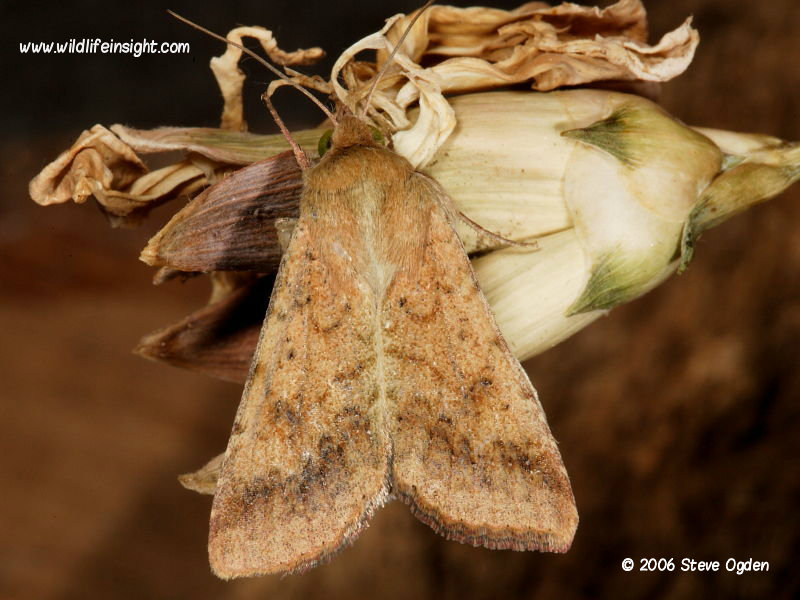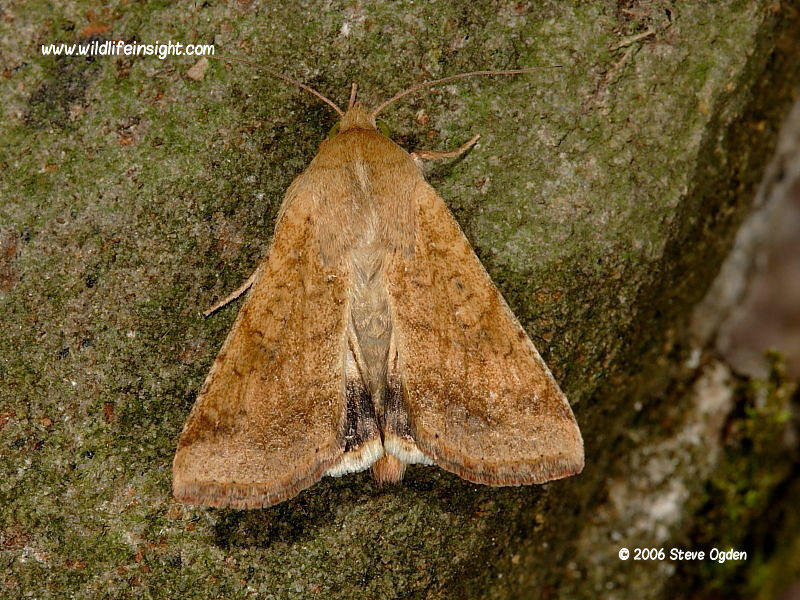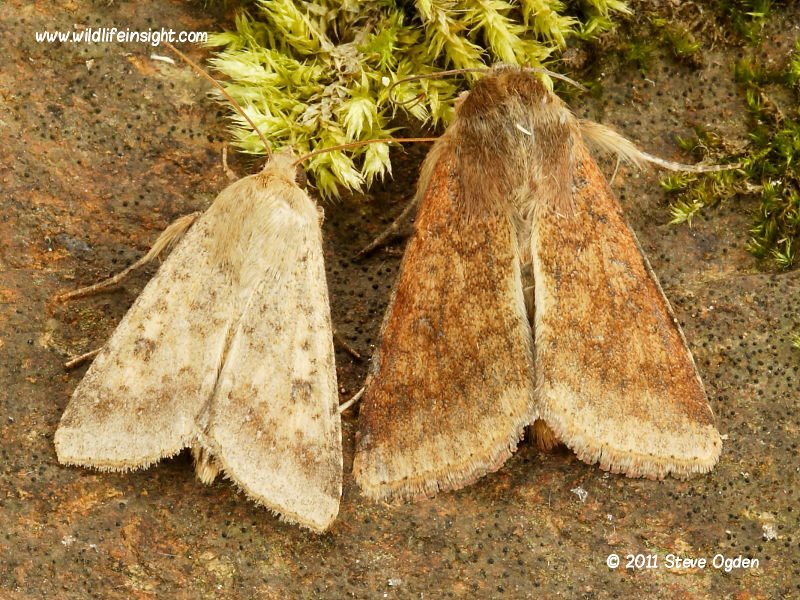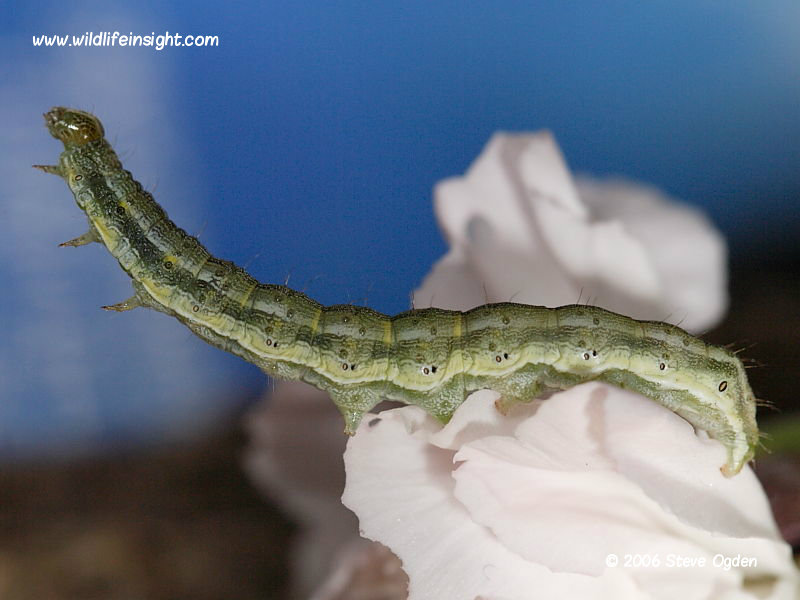The Scarce Bordered Straw (Helicoverpa armigera) B/F 2400, is an annual migrant moth to the British Isles from southern Europe and North Africa.
During years of abundance on the continent and assisted by favourable weather systems small numbers are regularly attracted to light in the southern half of the British Isles.
Most arrive in late summer and autumn but annual numbers are extremely variable.
In the UK they are unable to survive even the mildest winters in Cornwall either as an egg, caterpillar, pupa or adult moth, so unlikely to establish a resident population.
Scarce Bordered Straw moth identification
The moths can be extremely variable in both size and appearance with a forewing length ranging between 14-22mm.
The top photos shows two variations that emerged from the cocoons of several caterpillars reared from a brood imported on supermarket carnations in 2006.
The rufous brown specimen being more typical of migrant moths arriving in the UK.
The third image is of two attracted to light on the south coast of Cornwall showing a considerable difference in size and colour.
Its close relative The Bordered Straw is also an annual migrant the UK.
Scarce Bordered Straw caterpillars
The caterpillars are between 35-40mm long and extremely variable in colour.
In the wild the caterpillars are ocassionally recorded in the UK and more likely to be found on imported flowers such as geraniums, carnations and marigolds.
The caterpillar shown was found on imported chysanthemums by Carol Littlewood in Montrose and has a wart like projection on either side of the dorsal line near the tail. Not all seem to have this feature.
Another form of The Scarce Bordered Straw caterpillar, featured below, was recorded by Charles Williams in his Essex garden.
The British moth caterpillar gallery includes other images of caterpillars that are sometimes imported.
For help with caterpillar identifiication
Scarce Bordered Straw caterpillar in UK garden
Old World Bollworm and Cotton Bollworm crop pest
In many parts of the world including parts of America, Europe, Africa, Asia and Australia the caterpillars of the Scarce Bordered Straw Moth, Helicoverpa armigera, are better known as Old World Bollworms and Cotton Bollworms. They are a serious pest of many agricultural crops including cotton, maize, fruits, vegetables and cultivated flowers.
In those countries with constant hot temperatures it is continuously brooded.
Scarce Bordered Straw caterpillars on imported flowers
Although the caterpillars are less likely to be found in the wild in the UK they are frequently accidentally imported in on agricultural produce and in particular on cultivated garden and decorative cut flowers such as carnations and chrysanthemums.
In 2006 several different coloured forms of caterpillar found on supermarket carnations were reared through to establish their identity.
Expecting at least two different species it was surprising they all emerged as Scarce Bordered Straw, reflecting the wide caterpillar variations.
Caterpillars on carnations
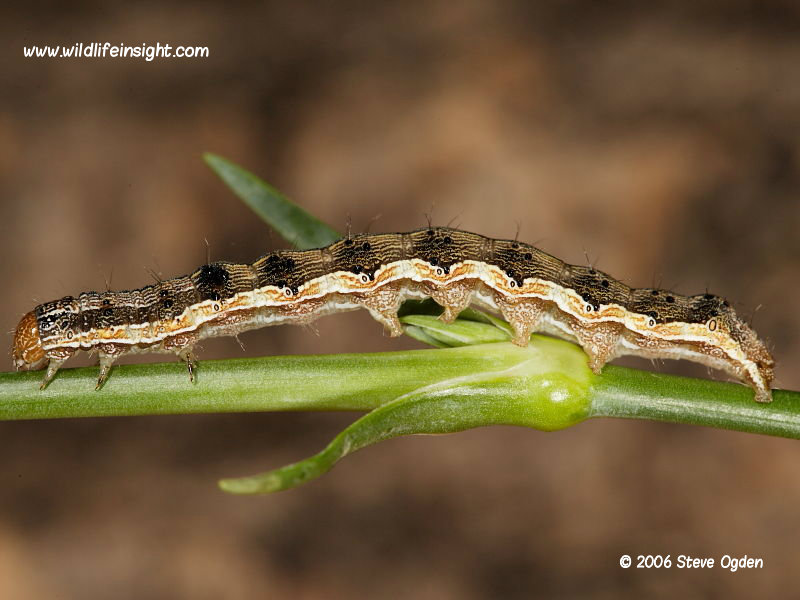
When reared in average indoor summer UK temperatures the caterpillars grew rapidly feeding on the flower petals – the pink and
white frass reflecting the colour of the carnation on which a particular caterpillar had been feeding.
The caterpillars pupated in a slight cocoon with adult moths emerging within 14 days.
It seems plausible that in considerably warmer temperatures of southern Europe and North African development from egg to adult moth could take less than six weeks and be continuously brooded.
